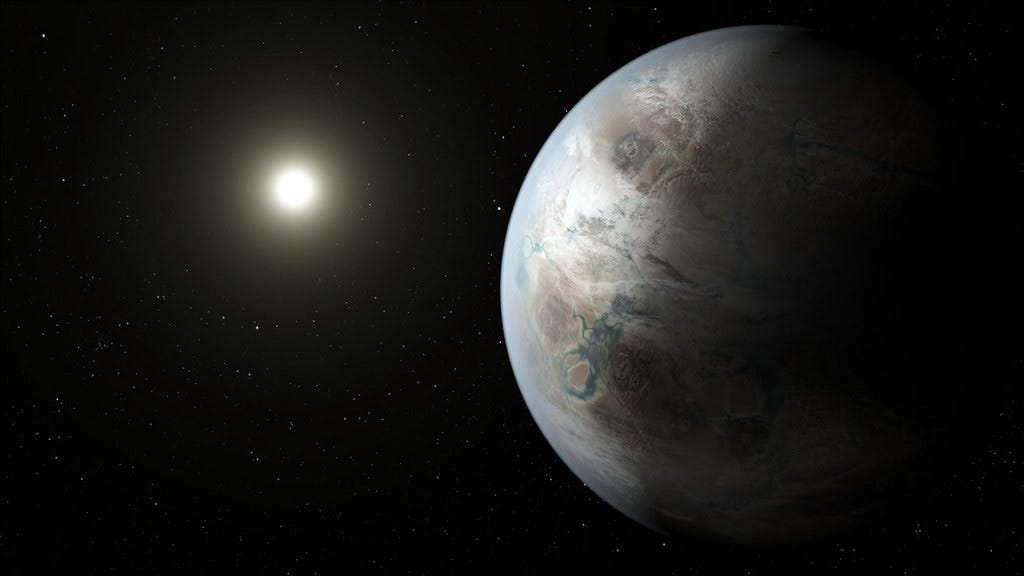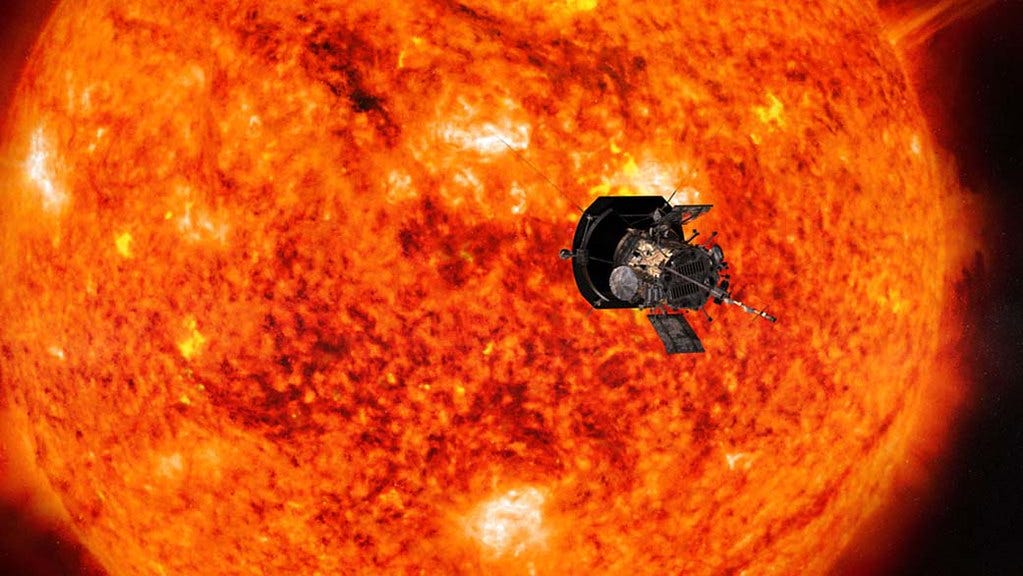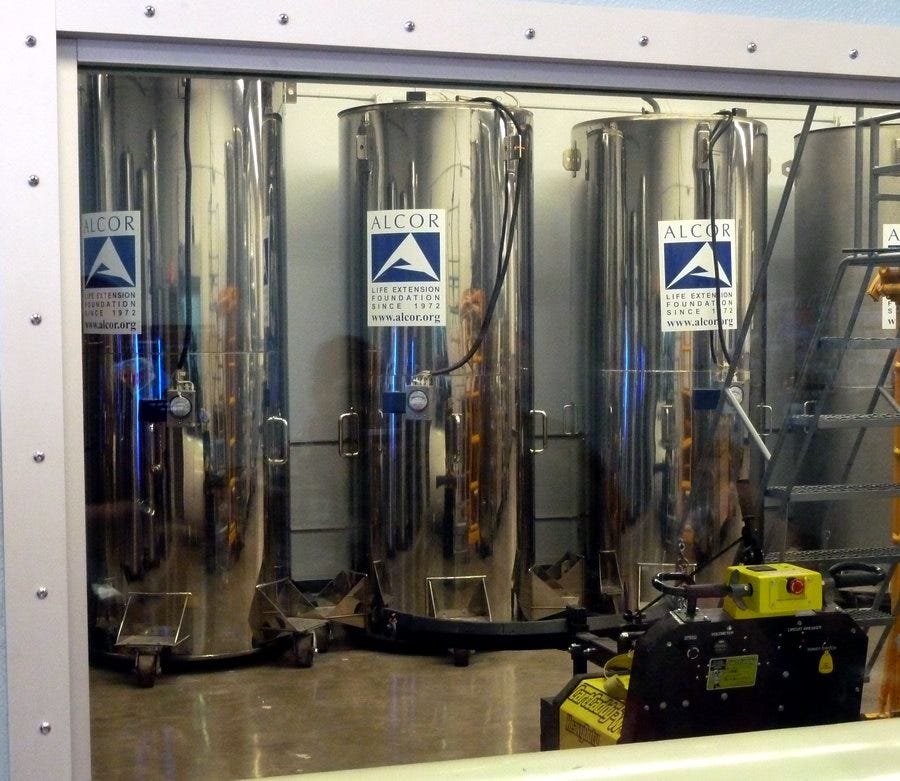Interstellar Travel in the Blink of an Eye
Distant planets are in our future.
Your anxiety fades as you behold the familiarity of your new surroundings. The ground beneath your feet is solid. The sun in the sky shines just as it does at home. The weather is a little warmer than you are used to, but perfectly pleasant. The doubled strength of gravity and thirteenth month of the year will be a little harder to get used to. On the whole, though, you really believe it: Kepler-452b could be your new home.
Kepler-452b is a faraway planet that was discovered in 2015. NASA dubbed it “Earth 2.0” because it may well have environmental conditions very similar to Earth. It is the kind of place you might want to visit, or even move to. There is only one issue. It is seventeen thousand trillion kilometres away. Unfortunately, physics dictates that this trip must take at least 1800 years. Fortunately, it also says that it can be completed in the blink of an eye. When it comes to interstellar travel, it’s all relative!

An Astronomical Challenge
The fundamental problem with space travel is that distances in outer space really are astronomical. To see this, imagine that we make a scale model where the Earth is the size of a baseball in my home. In this model, Kepler-452b would be a bocce ball on Mars.1 This is why space travel is so profoundly different from the travel we are familiar with; the longest journey you have ever taken is no closer to travelling to Kepler-452b than an ant crawling around a baseball is to travelling to Mars. This means that interstellar travel is only feasible at incredibly high speeds. Even at the speed of the fastest spacecraft ever built, travelling to Kepler-452b would take three million years! For the foreseeable future, visiting Kepler-452b is therefore unthinkable. However, it seems clear what would be necessary – to develop new spaceships that travel much faster. Perhaps, with technological development, this is simply a matter of time.
However, there is a fundamental barrier that no technology can ever overcome: the speed of light. This is a maximum possible speed that nothing can ever exceed. It is extremely fast – 300 000 kilometres per second. Yet, even at this speed it would still take 1800 years to reach Kepler-452b. This is a length of time that is at least imaginable within the scope of human history, but it is also far too long. This is the ultimate stopper on dreams of interstellar exploration or expansion. No matter how hard you try or what new technologies emerge, it will never be possible to take a quick trip to Kepler-452b.

Time Dilation and Length Contraction
Why can’t we travel faster than the speed of light? To understand, begin by imagining that you are sitting in a car moving at a speed of 50 kilometres per hour. You reach out the window and throw a ball forward at 30 kilometres per hour. I stand on the pavement and watch the ball. How fast do I see it move? Before you threw it, I saw it move with you and the car at 50 kilometres per hour. It then moves 30 kilometres per hour faster than that after it is thrown. So, I see its final total speed as 80 kilometres per hour. This is how speeds combine in classical physics; if you are moving in a vehicle at one speed and then are launched out the front at another speed, your total speed is the sum of these two speeds.
Let us try using this approach to travel faster than the speed of light! First, you get in a spaceship and speed up to 75% of the speed of light. You then get in a little rocket inside the spaceship and launch the rocket out of the front to the spaceship at 50% of the speed of light. What is your total speed? Following the example above, it should be 75%+50%= 125% of the speed of light. That is, you should be moving faster than the speed of light! This is impossible. The reason is that, according to Einstein’s theory of relativity, when dealing with speeds close to the speed of light you cannot simply add the speeds together. Instead, you must use a more complicated formula that says that your total speed is always slower than the speed of light – in this case 91% of the speed of light.2
How can the total speed be slower than the sum of the speeds? The reason Einstein provides is that two effects occur when you move close to the speed of light: time dilation and length contraction. These effects constitute the warping of time and space themselves in a way that enforces the universal speed limit. Specifically, time dilation is the observation of time passing more slowly for objects moving close to the speed of light. This means that someone watching you from Earth sees everything you do on the spaceship in slow motion. So, when you launch your rocket, they do not see it launched at the full speed of 50% of the speed of light. Instead, they see it move in slow motion at a slower speed (16% of the speed of light) and so they see you move at 75%+16%=91% of the speed of light.
However, you do not experience yourself moving in slow motion. Indeed, you find that you really do seem to be travelling faster than the speed of light! Your guidebook says that at the speed of light it would take you 80 minutes to reach Saturn from Earth, but your watch says it takes you only 37 minutes!3 However, in reality your speed is still less than the speed of light because of length contraction. Length contraction is the observation of distances being shortened in your direction of travel when you travel close to the speed of light. It means that the distance from Earth to Saturn is actually shorter for you than the guidebook says it is. This means that the actual speed you are travelling at is again only 91% of the speed of light even while reaching Saturn from Earth in less than 80 minutes.
How Long Does Travelling to Kepler-452b Really Take?
Length contraction opens up a new possibility in space travel. Although you cannot move faster than the speed of light, there is no limit to how much you can reduce the distance you need to travel through length contraction. This means that the time you have to wait before arriving at your destination can be as short as you like, just as would be the case if you were not limited by the speed of light. For example, if you travel at 50% of the speed of light, it would take 3100 years to reach Kepler-452b. At 99% of the speed of light, it would take just 250 years. At 99.99999% of the speed of light it would take less than one year. At 99.9999999999% of the speed of light it would take less than one day.4 A holiday to Kepler-452b may not be out of the question after all!
However, there is a catch! Because of time dilation, people on Earth (and on Kepler-452b) will see time slowed down on your spaceship. As you travel at 99.9999999999% of the speed of light, what is a day to you is 1800 years to them. So, when you arrive at your destination, you will not find that it is the day after you left. You will find that is 1800 years after you left. This is the true barrier imposed by the speed of light. Your journey can be as quick for you as you like. If you travel close enough to the speed of light, it can take only the blink of an eye. But for the outside world that blink of your eye would take 1800 years.
Travelling in Space and Time
A common idea for overcoming the challenge of transporting people over the vast expanses of space is cryogenics – freezing people for the duration of the journey. This is essentially a method for reducing the time that passes for the passenger to almost nothing even while centuries may pass for the outside world. What we have learnt in this post is that if you travel fast enough then freezers are not necessary – time dilation will do the job automatically. A person on Earth using a telescope to observe a spaceship moving at 99.9999999999% of the speed of light would see everything inside moving so slowly as to be essentially frozen. They would see the blink of a passenger’s eyes take all day. The passengers’ hearts would only beat once per week. Centuries would pass on Earth while passengers sat watching a single inflight movie.

The comparison to cryogenic freezing clarifies the true limits physics places on space travel. There is no theoretical minimum length of commuting time you must wait to travel to anywhere in the universe. Whether by travelling close enough to the speed of light for time dilation and length contraction to take hold, or by cryogenic freezing, we can arrange for the travellers to experience as little time as we like on their journey. However, there is a minimum length of time that must pass in the outside world during the journey, which is imposed by the speed of light.
In other words, the one fundamental constraint that physics places is that there is no possible process by which you are present on Earth today and also present on Kepler-452b at any time in the next 1800 years. We can therefore avoid confusion about what is possible and impossible in space travel by accepting a simple conclusion – Kepler-452b is not just seventeen thousand trillion kilometres in space from Earth but also 1800 years forward in time. You can travel there as quickly as you like, but when you arrive you are guaranteed to find yourself at least 1800 years in the future of the moment you left home. So, while it remains to be seen whether living on distant planets will be a part of humanity’s future, relativity teaches us that – in one way at least – it is certainly true that distant planets are in our future.
The diameter of the Earth is 13000 km, and the diameter of a baseball is 7.6 cm, so the model would be scaled down by a factor 170 million. This means the distance from the Earth to Kepler-452b would be 100 million kilometres – approximately the distance from Earth to Mars in October 2022.
The fraction of the speed of light given by the sum of velocities is v/c=(0.75+0.5)/(1+0.75*0.5)=0.91.
The time taken as measured by an observer on Earth is t=d/v=80 lightminutes / 0.91c = 88 minutes. Therefore, the time measured by the you is t’=88 minutes/2.41=37 minutes, where 2.41 is the Lorentz factor for a speed of 0.91c.
These time as measured in the spaceship is given by t’=d/(γv), where d=1800 light years is the distance, v is the speed and γ is the Lorentz factor. For the four speeds given we have Lorentz factors of 1.15, 7.09, 2236 and 707107. In particular for v=0.999999999999c, we have t’=1800 years/707107=0.0025 years = 22 hours.


Nicely explained! I vaguely remember the formulae from my AP physics course ... What we did not discuss at the time: How would one experience acceleration to such speeds? Do you have info on that?